NORMANDY AND THE D-DAY LANDINGS

As well as the delightful seaside towns such as Deauville, Trouville and Honfleur and the extraordinary natural phenomena of Étretat, there’s another important aspect of the Normandy coast. It’s something of a pilgrimage site for travellers who want to visit the landscape of the momentous day that changed the course of history. The D-Day Landings just before dawn on 06 June 1944 were nothing less than the largest and most complex combined airborne and amphibious military operation of all time.
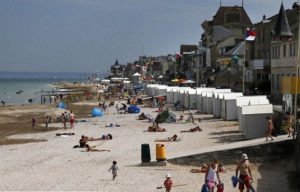
Today, the 80 km stretch of Normandy’s La Manche coast (English Channel) that was the location of the D-Day landings has long returned to being pleasant sandy beaches dotted with children playing and sun-seekers, but everywhere you go are the reminders of those terrible days and the horrific toll of lives lost. Hitler’s “Atlantic Wall” is still evident in tank traps, massive bunkers and gun emplacements, some of which are askew where they’ve settled into the sand dunes over the decades since, while others have been turned into museums dedicated to telling the story of D-Day, code named “Operation Overlord.”
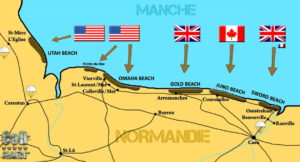
At each of the landing sites and all along the shore are monuments and memorials to those who fought and died, and each museum illuminates a different aspect of the story. These are so much more than tourist attractions. And the museums reflect this. Several have well-designed exhibits for the young, replicating scenes and showing in videos or activated models how equipment worked and suchlike. There are things to do as well as things to see. Visitors can climb aboard historic landing craft, sit in a tank, and explore dark, cavernous bunkers.
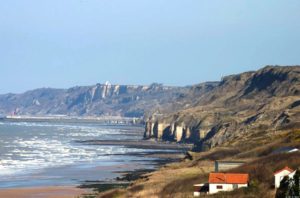
Alternatively, simply stand in silence on the D-Day beaches and try to picture the events of that extraordinary day. It’s also the nature of the landscapes and topography behind each of the beachheads that enables the visitor to really understand what the individual soldiers, from both sides, endured during this almighty struggle.
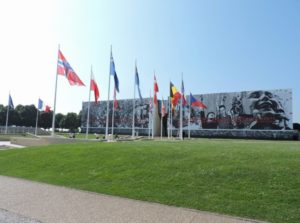
The landing sites lie between Pegasus Bridge in the east and Sainte-Mère-Église in the west, and perhaps the best way to tackle the area is to visit the Mémorial de Caen first. Housed in a modern, purpose-built structure on the outskirts of the charming city of Caen, the museum will give you an excellent, broad overview not only of WW2, but especially the role played by the region’s beaches on that fateful day in June 1944.
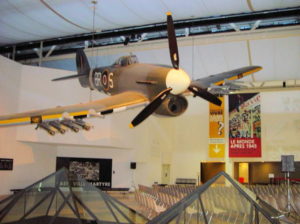
Although of course there are fascinating objects on display, this is not so much a museum, but rather, a memorial, designed to make us remember not only what happened, but also what caused it to happen and what the consequences were in the aftermath of the war.
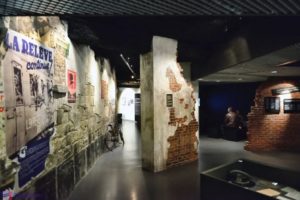
The huge exhibition takes the visitor from the build-up to the war through to the end of the Cold War. The memorial is full of objects and films made during and after the war, conveying the global history of the war as well as personal stories of the soldiers. There are dioramas of the attack on Pearl Harbor and the Battle of Normandy, as well as harrowing details of the atomic destruction of Hiroshima and Nagasaki. At the rear of the building there is an elevator that descends into what was an underground German bunker that served as the command centre for Gen. Wilhelm Richter.
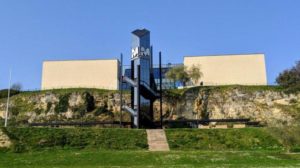
Although the main focus of the museum is WWll, there are also exhibitions devoted to WWl, in 1991 a gallery dedicated to the Nobel Peace Prize opened, and in 2002 an extension to the museum dedicated to the Cold War (including fragments of the Berlin Wall) was opened by President Jacques Chirac. There’s a lot to absorb at the memorial, and although you may be inclined to feel rather drained after all that, it’s a very fulfilling experience that still manages to emphasise the value of peace and the sacrifices made on Normandy’s beaches in order to reach that ultimate objective.
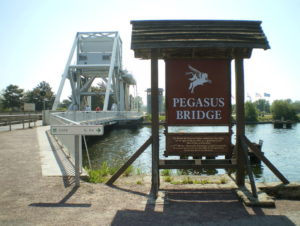
From Caen, head 9 kms N.E. for a stop at the Pegasus Bridge at Bénouville. At 10 mins. past midnight on 06 June 1944 the first paratrooper landed just east of Ouistreham and at 12.20am, 6 gliders crash-landed beside the Caen Canal with 45 men. Subsequent landings dropped another 6,000 men of the British 6th Airborne Division whose mission was to seize and hold the bridge over the canal to prevent German forces from reaching it, and keep the bridge open and intact for allied forces to move eastward. The current bridge is an exact reconstruction of the original, which you can see, and cross, at the Pegasus Bridge Museum.
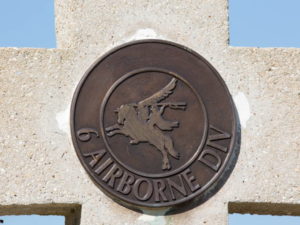
The bridge was renamed ‘Pegasus’ in 1944 in honour of the operation, and its name derives from the shoulder insignia of the British Parachute Regiment which depicts the winged horse from Greek mythology.
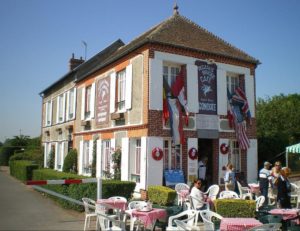
The museum has a full-size replica of a Horsa Glider and a large section one of the originals. On the Ouistreham side of the canal, Café Gondrée, the first house in France to be liberated, is now a tearoom and shop.
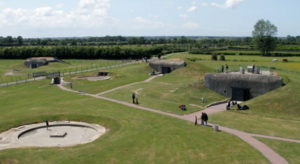
If you’re aiming for Sword Beach, the easternmost sector of the amphibious landings, make your first stop at the Merville Gun Battery, which consisted of multiple bunkers that withstood repeated allied air attacks. The position was finally taken by British paratroopers, but the structures remained intact. A tour of the bunkers immerses the visitor in a Son-et-Lumière show depicting the attack which includes realistic details such as smoke effects.
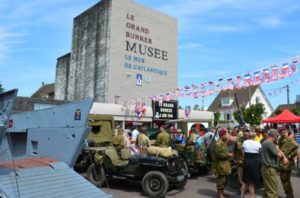
The stretch of beach designated as ‘Sword’ starts at Riva-Bella on its eastern end, which is a part of Ouistreham and the entrance to the Caen Canal. The Atlantic Wall was especially strong here, with armed bunkers spaced at approx. 100m intervals and the beach strewn with mines and tank traps. One bunker was the German fire control post that wasn’t taken until 09 June, and today this bunker is one of the most authentic museums of the entire coast, recreating in exact detail the appearance and function of each room in its six floors, including the observation post with its powerful range-finder and a 360 deg. view over Sword Beach. Using the actual equipment and furnishings of the time, the bunker details the daily life of the soldiers stationed there. Additional exhibits detail the building, the extent and camouflage of the Atlantic Wall.
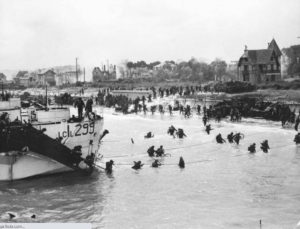
Further west along from Sword is Juno, which is of particular interest to Canadian visitors, since it’s where Canadian marine commandos, followed by more Canadian forces, first came ashore. There is a Centre Juno Beach which offers a unique Canadian perspective on the events of D-Day. At the western end of Juno there is a double-armed Cross of Lorraine, marking the site where Charles de Gaulle made a brief return to France on 14 June 1944.
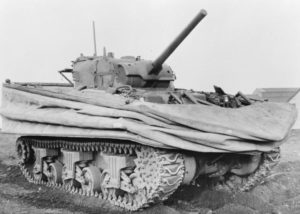
At the other end there is a “Sherman Bold” tank, recovered in 1970 from more than 3 kms out at sea, which is now a monument to the Canadian Hussars. These amphibious Sherman tanks were fitted with “flotation screens” and propellers enabling them to “swim”, providing covering fire for the troops as they embarked from the landing craft.
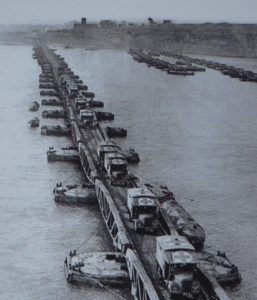
The lack of large harbours along this stretch of the Normandy coast was creatively overcome by the construction of two massive artificial ports, called Mulberry Harbours, assembling huge concrete caissons to form breakwaters. These were towed across the Channel and sunk offshore to create a breakwater and harbour inside for protection, where long floating jetties were assembled to offload tanks and massive amounts of equipment.
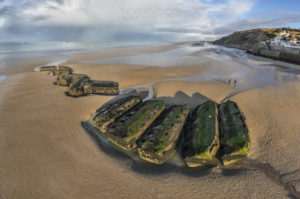
Remains of the Mulberry Harbour, known as Port Winston, named for Winston Churchill, can be seen today at Arromanches, where British forces landed under fierce fire, and despite heavy casualties, managed to bring their tanks onshore.
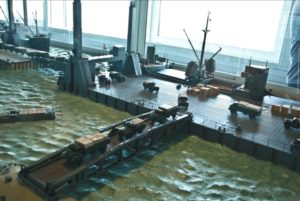
There are several good museums at Arromanches, including Arromanches 360 and Musée du Débarquement (D-Day Museum) at Place du 6 Juin in the town. This museum not only pays homage to the allied forces in the Battle of Normandy, but illustrates the operation of the Mulberry Harbour through working scale models, complete with animated details such as rising and falling tides.
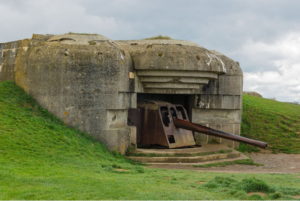
Just west between Arromanches and Port en Bessin, at Longues-sur-Mer, you can visit sections of Hitler’s Atlantic Wall, including a battery, manned by a garrison of 180 troops. It consisted of four 150mm naval guns housed in concrete casemates with a German range-finding post and a searchlight installation, all within a ring of barbed wire and mines. The battery featured in the film ‘The Longest Day’.
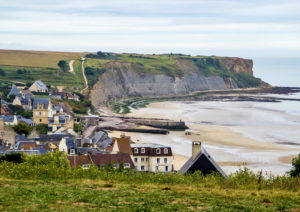
The next is Gold, the middle of the 5 main beaches of the Landings. It was one of the primary British targets and heavily defended by German Infantry Divisions. Due to the stiff resistance, the British didn’t secure Bayeaux, their primary objective until 07 June, however they still managed to take the town of Arromanches and link up with the Canadian forces at Juno. Gold was the scene of the only Victoria Cross awarded on D-Day. The recipient was British Sergeant Major Hollis, for his single-handed attack on 2 German pillboxes.
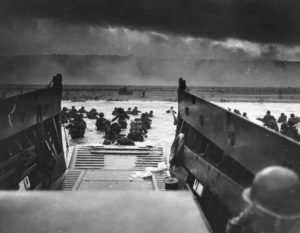
Probably the best known of the Normandy beaches is Omaha, which was assigned to two US Infantry Divisions. This beach referred to a section of coastline approx. 8 kms long, from Sainte-Honorine-des-Pertes to Vierville-sur-Mer, which formed the link between the British and American landing forces.
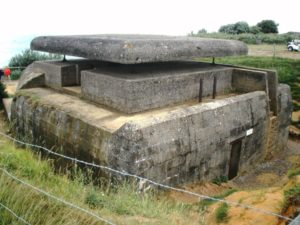
Omaha Beach was far more heavily defended than anticipated, and the US forces suffered heavy casualties in the assault but managed to secure a shaky beachhead. The D-Day landing at Omaha was memorably portrayed on film, especially ‘Saving Private Ryan’ and ‘The Longest Day’—considered the best film ever made on the subject.

The American Cemetery at Omaha Beach has the graves of 9,386 American personnel who were killed during the landings. Like all the other cemeteries relating to the Normandy Landings, it is immaculately presented, and very moving. You can also visit the Memorial, the Garden of the Missing, and a viewing platform that overlooks Omaha Beach.
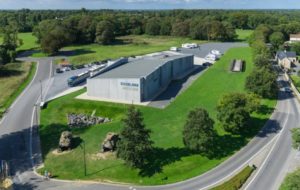
Located about 1 km from the American Cemetery is the Overlord Museum, which chronicles the period of the Allied landing until the liberation of Paris. Giving it a human dimension are accounts, stories, impressions and objects, with very good sound and light effects as well as authentic equipment and artifacts.
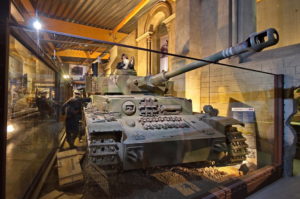
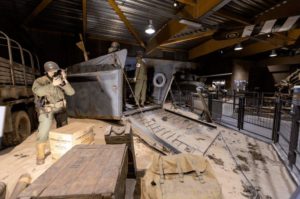
His passion for collecting memorabilia and material lasted for 40 years, displaying them in a former cheese factory, as at that time there were no other museums or collections that told the story of the Battle of Normandy. On his death, his collection formed the core of the Overlord Museum.
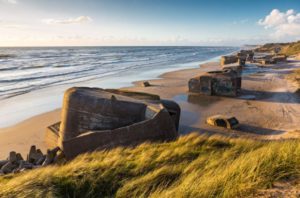
The most western of the Landings Beaches is Utah, which was the 2nd American landing point for a US Infantry Division and a Tank Battalion. The defending forces were mostly poorly-equipped, non-German conscripts, resulting in the area being secured by the US forces quickly and with relatively few casualties.
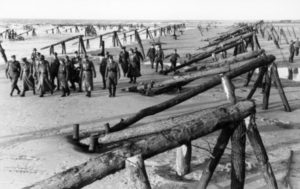
It was low tide when the 4th Infantry hit the beach at 6.30am, and the German coastal defences had been badly battered, disabling much of their firepower. This reduction in enemy fire enabled all but 2 tanks to land, and German landing obstacles, such as the “Czech Hedgehogs” and “Rommel’s Asparagus” to be revealed, some of which you can still see in the sand dunes.

Although not one of the main beaches, Pointe du Hoc, the outcrop that dominated the headland between Omaha and Utah, was the scene of one of D-Day’s most dramatic assaults.
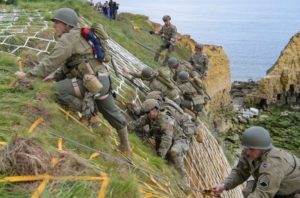
Using rocket-fired grappling irons, 200 American troops from the specially-formed Ranger Assault Group scaled the 30m high cliffs under heavy fire to secure a fortified heavy gun battery.
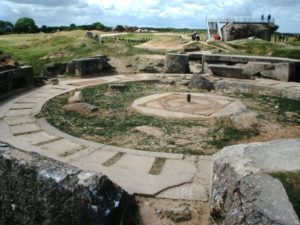
When the Rangers made their way up to the fortifications, they discovered that the artillery had been removed—the guns were later found by the Rangers, unguarded and abandoned, over half a km away and were then quickly destroyed. The isolated Rangers had to fend off German counterattacks until 08 June, when they were finally relieved.
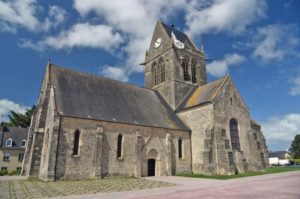
Inland from Utah beach, American paratroopers began the invasion well before dawn in and around the town of Sainte-Mère-Église. Like their British counterparts at the eastern edge of the invasion beaches, their job was to establish a line to protect the liberated territory from being retaken.
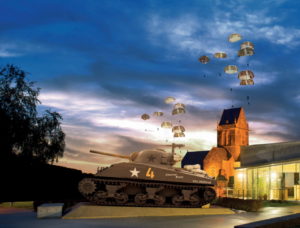
The dramatic story of the mission is well told at the Airborne Museum on rue Eisenhower in the town. The town’s church still re-creates the scene villagers awoke to, with paratrooper John Steele suspended from his parachute on the church roof. Steele’s medals, memorabilia from several generals and other soldiers who took part in the operation, and a C-47 Dakota aircraft used in the drops add to the very interesting collection of artefacts.
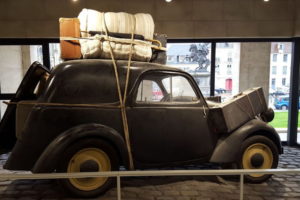
Finally, in acknowledgement of the impact on civilians of the war, how they lived and survived WW2 and its aftermath, there is a relatively new museum at the town of Falaise, 37 kms south of Caen. Opened in 2016, the Civilians in Wartime Memorial presents an opportunity to remember that the war cost the lives of 35 million civilians—much more than military personnel. Designed by the Mémorial de Caen, the museum places emotion and memory transmission at its heart. There are poignant testimonies of survivors, together with objects from everyday life and unpublished archives.
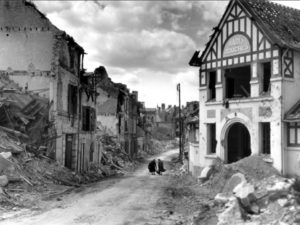
Each of the 3 floors of the memorial focuses on each of the 3 different themes of the museum, progressively giving an understanding of the Occupation, Liberation and post-war Reconstruction. On the ground floor the visitor enters the ‘Immersive Room’ where you can see the excavations of a bombed out house through a glass floor and experience the feeling of a bombing raid. On the upper floors are the ‘Civilians and Liberation’ and ‘Civilians and Occupation’ exhibitions detailing what life was like in Occupied France under the Nazis, and when 2 million Allied soldiers arrived on Normandy’s beaches. There is a new film about the Allied bombings using British, French and German archive footage, period artefacts, propaganda and photographs. There are also recreations of a French cinema and an enlistment office where French people had to register to work in Germany for the war effort.

As a little light relief after your visit, take some time to explore the now-peaceful and beautiful countryside around Falaise that is perfect for walking and cycling. As well, Falaise is the perfect historic Norman town for sampling some of the region’s cheeses and local cider brewed from apples grown nearby.



As always, fascinating reading – but this time
particularly so.
Hi Nadine,
Yes, there’s so much more I could’ve said about this fascinating area. It’s certainly worth exploring for those with an interest in WW2, and also for those with a specific connection to particular parts. Even for those with just a passing interest in the Landings, it’s a very rewarding location to spend time in.
Cheers,
Cheryl
Next time please include the memorial to the Poles and Canadians who broke the German defence at the Falaise Gap and allowed the advance to Paris.
Hello Allan (or is it Ernie?),
Of course, you’re right: there are so many areas of the Allied landings and battles to secure the whole Normandy coast, including, as you point out, the extraordinary efforts of the Polish and Canadian forces, who accomplished such remarkable feats. However, as you can appreciate, my Blog is for the general reader, rather than someone like yourself, who has a deep interest and knowledge of specific aspects of the events of D-Day and the aftermath. There’s any number of stories that can be told of that tumultuous time. As an historian myself (although ancient history is my academic area of study), can I recommend the books by Anthony Beevor, a fine historian, who wrote an entire book on the Normandy campaign. Perhaps you know of his numerous histories? A great writer!
Annette and I really enjoyed these last few blogs on the Normandy Coast as it is an area we have not seen. You do an excellent job and we almost feel we have been there with you.
Regards Annette & Tony T
Hi Tony and Annette,
So delighted that you’ve enjoyed the Normandy stories. It has so much to offer, so no matter what your interests, there’s plenty in this region to reward the visitor. There’s another couple coming up about Normandy.
Always lovely to hear from you!
Best regards, Cheryl